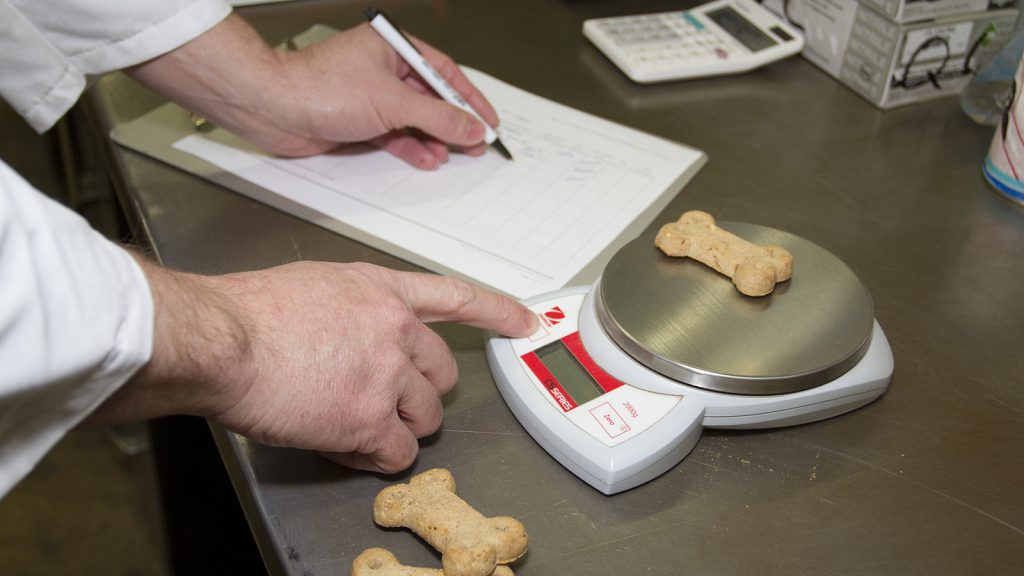Everything retailers and pet food brands need to know about this common label–and what questions you should be asking of your manufacturer.
Pet food manufacturers often tout their SQF certification, and for good reason. SQF certification is a quick way to communicate a dedication to food safety and quality. But what does it really mean? And what questions should you be asking of your manufacturer to make sure you’re getting the level of food quality and safety you need?
The Definition of SQF Certified
SQF stands for “safe quality food” but at its core, SQF certification is meant to reduce process variation and guide manufacturers to understand and implement process controls. Manufacturers identify what their process should look like and then are certified based on how well they comply to that baseline. Compliance and commitment to continuous improvement efforts are sections built into the code.
To date, there have been three levels of certification. Recent legislative changes, however, in the form of the Food Safety Modernization Act (FSMA) have established an industry minimum for Food Safety. The result: Quality is becoming a much larger focus of SQF certification and the certification levels will be changing with the new Edition 8 SQF certification code implementation in 2018. Here is a snapshot of what SQF certification levels look like now and what they will look like after January 2, 2018.
Current SQF Certified Levels (through January 1, 2018)
- Level 1 certification was reserved for low-risk products and did not apply to pet food manufacturing.
- Level 2 certification was focused on basic Food Safety requirements and meant the manufacturer’s food safety plan met minimum international requirements.
- Level 3 certification required manufacturers have both a comprehensive food safety plan in place that met Level 2 requirements and a quality management plan.
Future SQF Certified Levels (as of January 2, 2018)
- Food Safety Fundamentals
Formerly Level 1, this certification will become an “entry level” certification for new businesses.
- Food Safety Code
Formerly Level 2, this certification will focus primarily on meeting industry standard Food Safety requirements.
- Quality Code
Formerly Level 3, this certification still centers on the Food Safety and Food Quality Plan, but takes a harder look at maintaining quality products by focusing on Statistical Process Control to monitor, identify and reduce process variation.
Essentially, the Food Safety Modernization Act modernized the industry’s approach to food safety and now the approach to quality is being modernized as well.
Quality Questions to Ask Your Pet Food Manufacturer
Keep in mind that despite the changes, there can still be significant variation in how manufacturers have designed their food quality plans. Manufacturers have a choice. They can meet the bare bones requirements, or they can design a robust system that really expresses a commitment to safety and quality.
If you want to have confidence in how your pet food product is being produced, have a conversation with potential manufacturers around the following questions.
May I see your food quality plan?
If a potential pet food manufacturing partner doesn’t have a quality plan, that is a huge red flag. If they do, take a look at just how extensive it is and what is included/covered. Just having someone intelligently walk you through their process with confidence is a very good sign they are dedicated to knowing, understanding and maintaining a quality process.
Where do you see the most process variation and how do you control it?
A quality manufacturer should always know where their biggest risks are. Process variations will always exist, the goal is to mitigate and/or control them as closely as possible.
Tell me about your quality team.
A team of one person is not a team. In order for a manufacturer to craft and maintain a quality plan that works, they need to have a cross functional team involved. Only a team with different backgrounds working across different areas will be able to identify where the risks are across the full manufacturing lifecycle.
Also, make sure someone on your manufacturer’s team is competent in statistical process control and that they’ve attended SQF training. Although the SQF quality code doesn’t stipulate training requirements, ongoing training clearly shows a dedication to continual improvement. Alphia, for example, has been SQF certified to Level 3 for years and insists our quality team is both cross-functional and fully trained.
Producing Safer, Higher Quality Pet Food Products
Pet food safety regulations are getting closer and closer to human food regulations every day. In fact, Alphia’s canned pet food plant already follows Title 21 CFR113—where the Department of Health and Human Services and the FDA require thermally processed, low-acid foods to be packaged in hermetically sealed containers. But today’s (and tomorrow’s) focus on quality ups the game for pet food manufacturers industry-wide. Pet food manufacturers who take the quality challenge head-on will be the ones best able to help brand owners and retailers deliver on their brand promises.
Now find out what three questions about safety you should be asking your pet food manufacturer.
